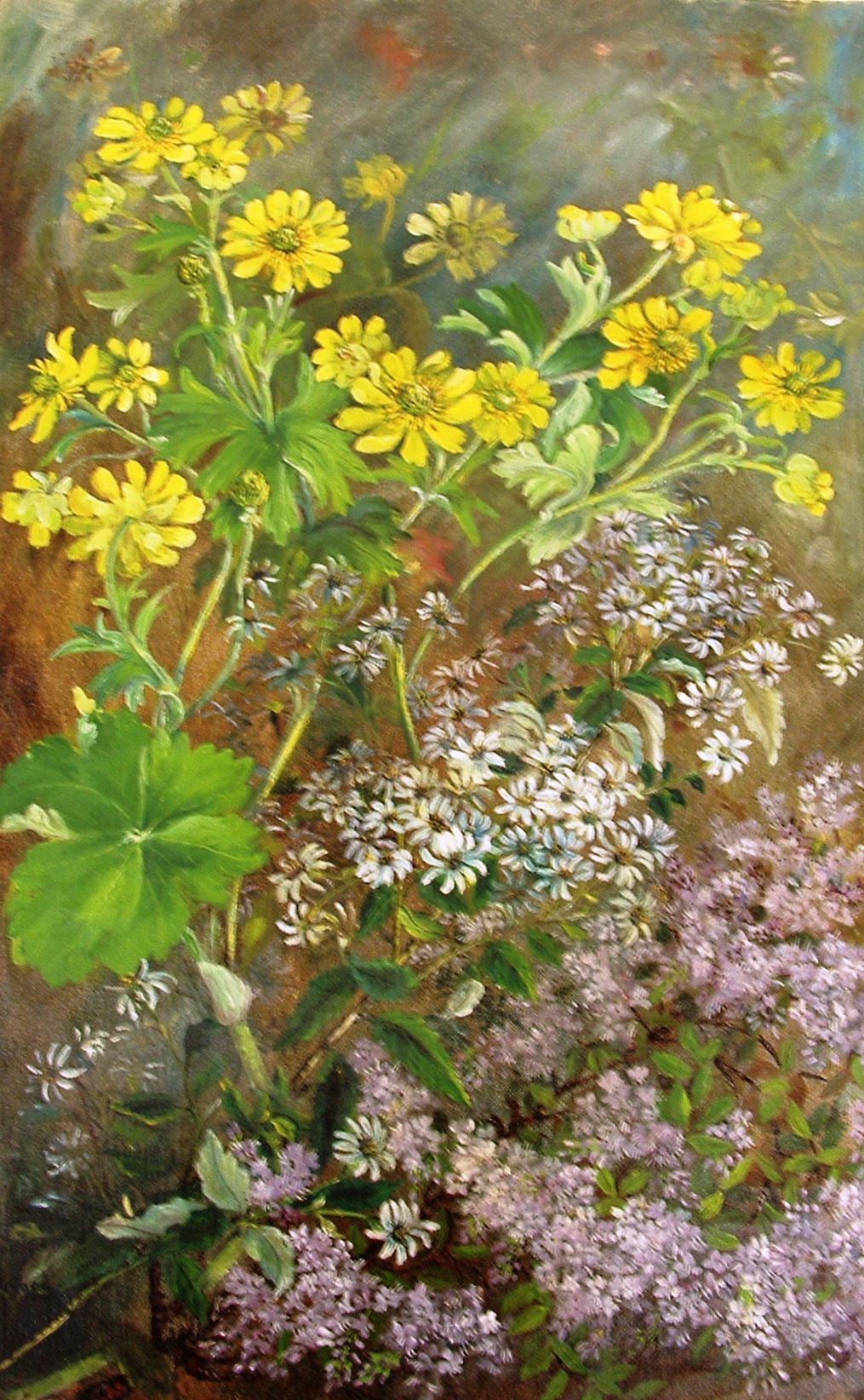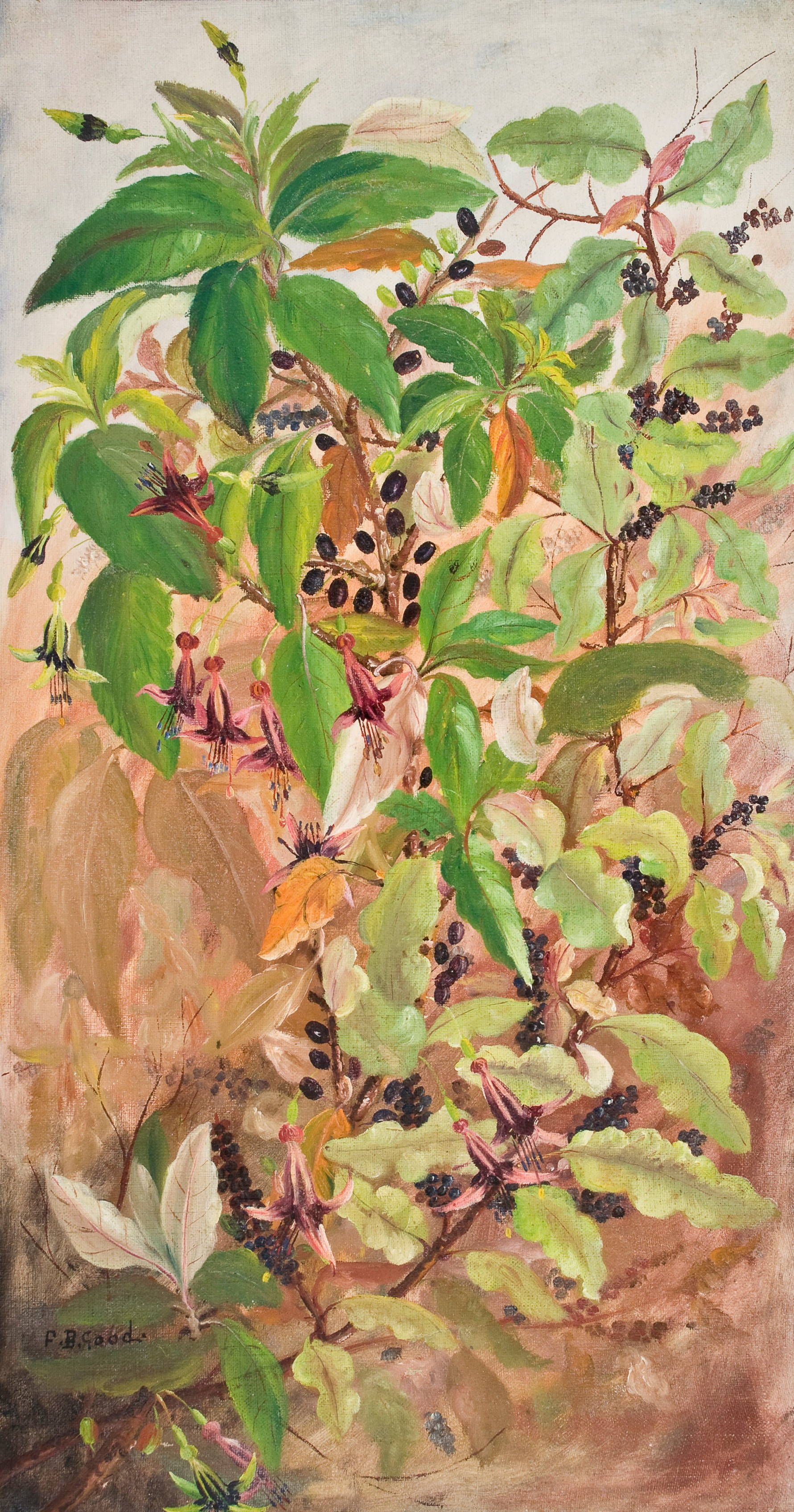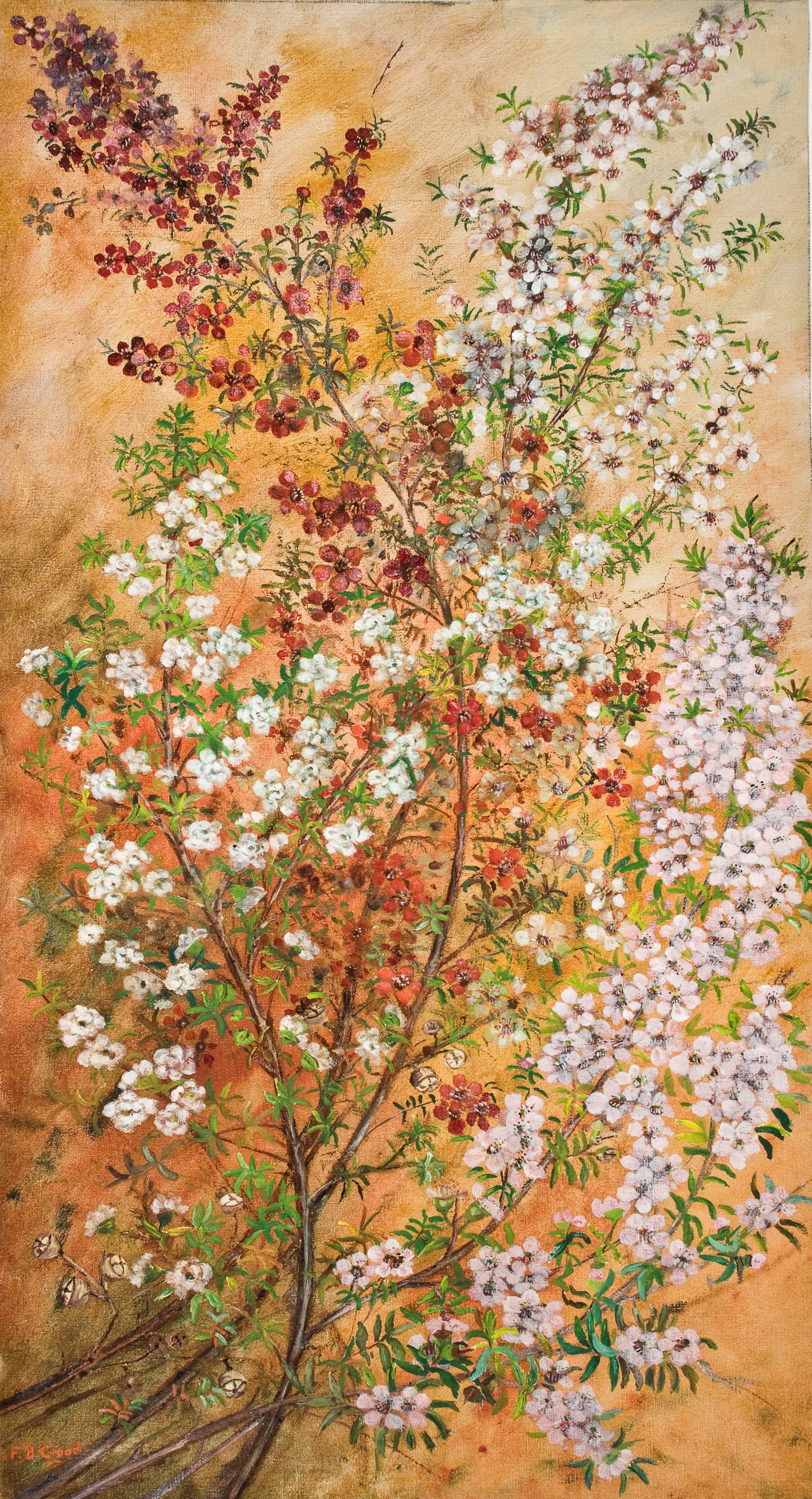







Botanical artist Fanny Bertha Good began painting at the age of 16, after a case of measles left her deaf. Her parents, Captain Thomas Good and Sarah Good (nee Gates), arrived in New Plymouth in 1845 on the ship Louisa Campbell, and lived in Omata, Urenui and Ōeo before they bought Ramanui, a farm near Hāwera in 1901.
One of 12 children, Fanny was tutored by her father, a well-regarded artist in his own right who has several paintings of landscapes and redoubts held in public collections around New Zealand. Fanny collected, dried and sold pine seeds to earn pocket money which she then used to buy paints and paper. Although she exhibited a number of works at the Dunedin and South Seas Exhibition in 1925-1926, she seldom sold her paintings. In 1935 more than 200 of Fanny's artworks were gifted to the Taranaki Museum (now Puke Ariki), many of which were actually on display in the Early Colonists' Room at the time of her death.
Fanny’s work is unusual in that she painted in oils – a medium seldom used by botanical painters as plant detail is difficult to depict. Such was her ability, however, that nearly every painting has been identified to species by botanists. Her use of oils also enabled her to successfully capture the atmosphere of the devastated, fire-blackened environment of South Taranaki in the late nineteenth and early twentieth centuries.
Captain Thomas Good
LinkExhibits in the Education Court at the Exhibition (Evening Star 24 April 1926)
LinkState Forest Service display at South Taranaki Show (Taranaki Daily News 28 June 1928)
LinkFloral studies in oil (Hawera Star 7 February 1935)
LinkDeath of artist (Otago Daily Times 18 December 1950)
LinkExhibition reveals unseen view of Taranaki's botanical history (Taranaki Daily News 28 March 2023)
LinkState of Nature – Picturing the Silent Forest (Puke Ariki exhibition)
LinkPlease do not reproduce these images without permission from Puke Ariki.
Contact us for more information or you can order images online here.